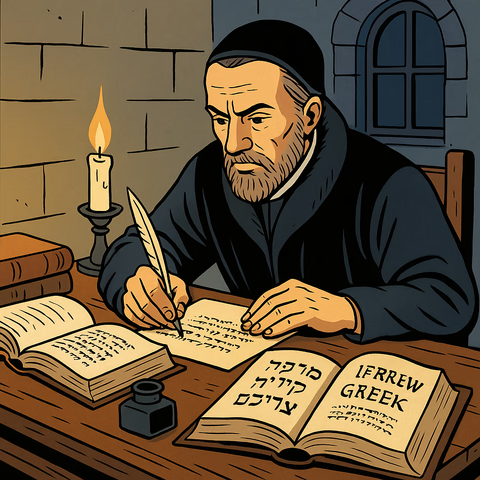
Timeline of Bible Translations
The story of Bible translation begins with a remarkable project in ancient Alexandria, where Jewish scholars first translated their Hebrew scriptures into Greek.
That Greek Septuagint translation would become the Bible of early Christians and set a precedent for making scripture accessible to new audiences.
Through the centuries, translation efforts often sparked controversy - from Jerome’s innovative work on the Latin Vulgate to Tyndale’s dangerous mission to create an English Bible.
Time covered
Today, we’re living through an unprecedented era of Bible translation. Modern technology and collaborative efforts have accelerated the pace of translation dramatically. So this timeline covers the history of Bible translation right up to the present day, and will be updated as notable new translations are completed.
Timeline
c. 1500-400 BC
Writing of the Jewish-Era Books
The books of the Hebrew Bible (Old Testament) are written over approximately 1,100 years. Most are written in Biblical Hebrew, with small portions in Biblical Aramaic.
c. 280-150 BC
The Septuagint Translation
Jewish scholars in Alexandria, Egypt translate the Hebrew Scriptures into Koine Greek, creating the Septuagint (LXX). This becomes the first major Bible translation in history.
The translation begins with the Torah (first 5 books) and gradually expands to include all Hebrew scriptures. It becomes the primary Bible of Hellenistic Judaism and early Christians.
AD 44-98
Writing of the Christian-Era Books
The Christian books of the New Testament (Matthew-Revelation) are written in Koine Greek (although some argue for Aramaic). These writings spread rapidly throughout the Roman Empire, with early Christians making copies for different congregations.
AD 150-200
Old Latin Versions Emerge
The first Latin translations appear in Roman North Africa, where Latin was becoming the common language. These ‘Old Latin’ versions (Vetus Latina) were translated from the Greek Septuagint and Greek New Testament manuscripts.
These early translations varied greatly in quality and consistency, leading Jerome to later comment that there were ‘almost as many texts as manuscripts.’
AD 200-300
Coptic Translations Appear
Egyptian Christians create several translations in different Coptic dialects, including Sahidic (southern) and Bohairic (northern).
These become the first translations to use the Coptic alphabet, which added Greek letters to Egyptian hieratic script.
These translations prove crucial for preserving early Christian texts and understanding the development of Egyptian Christianity.
AD 350-380
Gothic Bible Translation
Ulfilas (also called Wulfila) creates the Gothic alphabet and translates the Bible into Gothic, becoming the first Germanic Bible translation. He intentionally omits the Books of Kings, fearing their violent content would further inflame Gothic warfare.
This translation helps spread Christianity among the Goths and becomes a crucial source for understanding the ancient Gothic language.
AD 382-405
Jerome Creates the Latin Vulgate
Pope Damasus I commissions Jerome to create a standardized Latin Bible. Jerome’s translation, later known as the Vulgate, becomes the definitive Bible of Western Christianity for over 1000 years.
Unlike previous Latin translations, Jerome works directly from Hebrew texts for the Old Testament, though he faces criticism for not using the Septuagint exclusively.
AD 400-450
Armenian Bible Translation
Mesrop Mashtots creates the Armenian alphabet specifically for Bible translation. Working with Sahak the Great, he produces the ‘Queen of Translations’ - known for its accuracy and literary beauty.
This translation helps establish Armenian national identity and literary tradition.
AD 450-500
Ethiopic Translation Completed
The Bible is translated into Ge'ez (Classical Ethiopic), becoming a cornerstone of Ethiopian Christianity. This translation includes unique books not found in other Christian traditions.
AD 500-600
Syriac (Aramaic) Peshitta Standardized
The Peshitta (‘simple’ or ‘common’ translation) becomes the standard Bible of Aramaic-speaking Christians. While parts date to the 2nd century or earlier, the complete version is standardized during this period.
AD 680-700
First English Scripture Translations
Caedmon, a monk at Whitby Abbey in Anglo-Saxon England, creates poetic paraphrases of Bible stories in Old English. Later, Aldhelm translates the Psalms, marking the first direct translation of Biblical text into English.
AD 735
Bede Translates John’s Gospel
The Venerable Bede completes a translation of John’s Gospel into Old English on his deathbed, though no copies survive.
AD 863
Slavonic Bible Translation
Saints Cyril and Methodius create the Glagolitic alphabet and begin translating the Bible into Old Church Slavonic, laying the foundation for Slavic written culture.
AD 1380-1382
Wycliffe Bible Appears
John Wycliffe and his followers produce the first complete English Bible, translated from the Latin Vulgate. This sparks controversy as church authorities oppose vernacular translations.
After Wycliffe’s death, his followers (Lollards) are persecuted, and in 1408 the Constitutions of Oxford make it illegal to translate or read the Bible in English without permission.
AD 1522-1534
Luther’s German Bible
Martin Luther translates the New Testament (1522) and Old Testament (1534) into Early New High German, creating a translation that shapes both German Christianity and the German language itself.
AD 1525-1536
Tyndale’s Revolutionary Translation
William Tyndale produces the first English Bible translated from original Hebrew and Greek texts. He introduces numerous English words and phrases still used today.
AD 1535
Coverdale’s Complete English Bible
Miles Coverdale produces the first complete printed English Bible, largely based on Tyndale’s work combined with German and Latin sources.
AD 1537
The Matthew Bible is published
John Rogers publishes Matthew’s Bible under the pseudonym Thomas Matthew, combining Tyndale’s and Coverdale’s work. This becomes the basis for later English translations.
AD 1539
The Great Bible Appears
The first officially authorized English Bible, known as the ‘Great Bible’ due to its size, is published under English King Henry VIII. Every parish church is required to display a copy.
AD 1560
Geneva Bible Published
Protestant scholars in Geneva produce the Geneva Bible, the first English Bible with verse numbers and extensive study notes. It becomes the most popular English Bible for decades.
AD 1568
Bishops’ Bible Released
The Church of England produces the Bishops’ Bible as an alternative to the Geneva Bible, though it never gains the same popularity.
AD 1611
King James Version Published
The King James Version (also known as the Authorized Version) is published under King James I, becoming the standard English Bible for centuries. It draws heavily from Tyndale’s work while maintaining more traditional theological terminology.
AD 1782
First American English Bible
Robert Aitken publishes the first English Bible printed in America during the American Revolution. It receives official Congressional endorsement when imports from Great Britain were restricted.
AD 1804-Present
British and Foreign Bible Society Founded
The British and Foreign Bible Society is established, marking the beginning of organized Bible distribution.
This would develop into the United Bible Societies, which have become the largest translators and distributors of Scripture worldwide. Working through a network of over 150 such societies around the world, they have produced translations in more than 1,400 languages.
AD 1814
First Chinese Bible Completed
Robert Morrison completes the first Chinese Bible translation after 7 years of work. This Protestant Bible in Classical Chinese laid the groundwork for future translations into various Chinese dialects.
AD 1818-1820
Early Modern Spanish Translations
Felipe Scío de San Miguel publishes his Spanish translation of the Latin Vulgate for Spanish-speaking Catholics, while Protestant missionaries work on translations from original languages.
AD 1823
First Modern Jewish Translation
Abraham Benisch begins work on a new Jewish translation of the Hebrew Bible into English, challenging Christian interpretations of key passages.
AD 1827
Tamil and Hindi Translations
William Carey completes translations into several Indian languages, including Tamil and Hindi, marking the first complete Bible translations in South Asia.
AD 1830-1833
Joseph Smith’s Bible Translation
Joseph Smith, founder of the Latter Day Saint movement, produces what he calls an ‘inspired translation’ of the King James Bible.
Smith made substantial additions and changes to the biblical text based on what he claimed were divine revelations. The complete text wasn’t published during Smith’s lifetime, being first published in 1867.
AD 1850
First Modern Portuguese Bible
João Ferreira de Almeida's Portuguese translation is completed and published, becoming the standard Protestant Bible in Portuguese-speaking countries.
AD 1851-1861
Torres Strait Languages
The Bible begins to be translated into Torres Strait Islander languages, marking some of the first translations for indigenous Pacific peoples.
AD 1857-1887
Major African Language Translations
Samuel Ajayi Crowther translates the Bible into Yoruba, while other missionaries complete translations in Swahili (1868) and Zulu (1883), establishing the first major African language Bibles.
AD 1880
Japanese Bible Completed
The first complete Japanese Bible translation is finished by a committee of American missionaries and Japanese scholars, using literary Japanese that would influence modern Japanese Christian terminology.
AD 1881-1885
English Revised Version Published
The English Revised Version becomes the first major English revision of the King James Bible, incorporating insights from recently discovered manuscripts and advances in textual scholarship.
AD 1887
Korean Bible Translation Begins
John Ross and Korean converts begin translating the Bible into Korean, completing the New Testament in 1887. This translation helped standardize the Korean writing system and influenced modern Korean literature.
AD 1901
American Standard Version
The American Standard Version is published, becoming the first major American revision of the King James Bible. It’s noted for its literal approach and use of ‘Jehovah’ for God’s name.
AD 1910
Louis Segond’s French Bible
The Louis Segond Bible becomes the standard Protestant translation in French-speaking regions, notable for its scholarly accuracy and literary style.
AD 1947-1956
Dead Sea Scrolls Discovery
The discovery of the Dead Sea Scrolls at Qumran provides new insights into ancient Hebrew texts, influencing future Bible translations and confirming the general reliability of existing Hebrew manuscripts.
AD 1950-1960
New World Translation
The Jehovah’s Witnesses publish their New World Translation. It becomes notable for using ‘Jehovah’ in both testaments and for its distinctive renderings of certain passages. This would eventually be translated into over 200 languages.
AD 1952
Revised Standard Version
The Revised Standard Version is published, becoming the first major English translation to make use of the Dead Sea Scrolls. It faces controversy for its rendering of Isaiah 7:14.
AD 1961-1970
New English Bible
The New English Bible is published, marking the first completely new English translation (not based on previous versions) since Tyndale.
AD 1971
New American Standard Bible
The New American Standard Bible is published by the Lockman Foundation, aiming to be the most literally accurate English translation while maintaining readability.
AD 1973
New International Version Project
Work begins on the New International Version by the Committee on Bible Translation, which would become one of the most popular modern English translations. It’s completed in 1978.
AD 1982
New King James Version
The New King James Version is published, attempting to update the KJV’s language while preserving its literary style and traditional manuscript base.
AD 1989
New Revised Standard Version
The New Revised Standard Version is published, becoming the first major translation to use gender-inclusive language where appropriate.
AD 1995
Contemporary English Version
The Contemporary English Version is published by the American Bible Society, specifically designed to be easy to read and understand.
AD 2001
Launch of 2001 Translation Project
The 2001 Translation project begins, aiming to create a fresh translation from the earliest complete sources. It prioritizes accuracy, readability, and editorial independence. It will be freely available online and open to continuous improvement.
AD 2007
First Complete Sign Language Bible
The New World Translation is the first full Bible translated into a signed language, American Sign Language (ASL).
AD 2022
Global Translation Milestone
According to Wycliffe Bible Translators, the complete Bible has been translated into 724 languages, with the New Testament available in an additional 1,617 languages.
Some portion of Scripture exists in 3,724 of the world’s estimated 7,151 living languages.
Timelines: Bible History
 Timeline of the Kings of Israel and Judah
Timeline of the Kings of Israel and Judah Timeline of the Maccabeean Period
Timeline of the Maccabeean Period Timeline of the Jewish-Roman Wars
Timeline of the Jewish-Roman Wars Timeline of Jesus' Death and Resurrection
Timeline of Jesus' Death and Resurrection Timeline of the Babylonian Exile and Restoration
Timeline of the Babylonian Exile and Restoration
Timelines: Doctrines
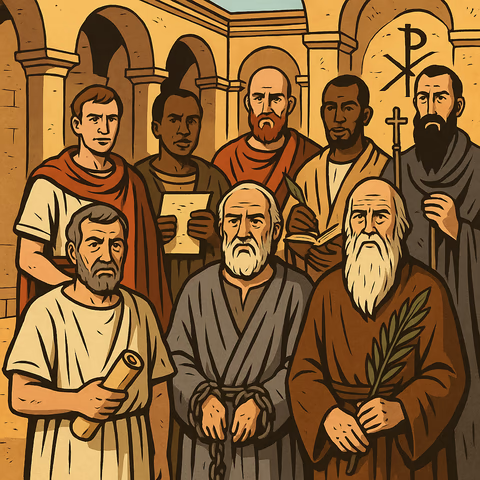 Timeline of Church Fathers and their Doctrines
Timeline of Church Fathers and their Doctrines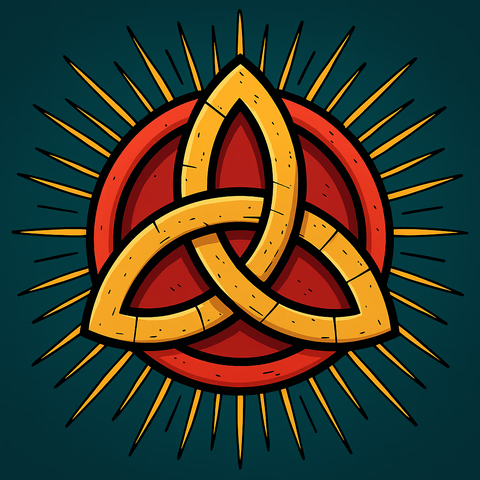 Timeline of the Trinity Doctrine
Timeline of the Trinity Doctrine Timeline of Afterlife Doctrines
Timeline of Afterlife Doctrines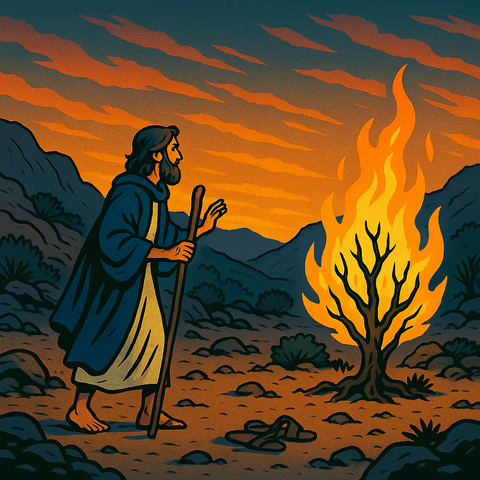 Timeline of God's Name
Timeline of God's Name
Timelines: Miscellaneous
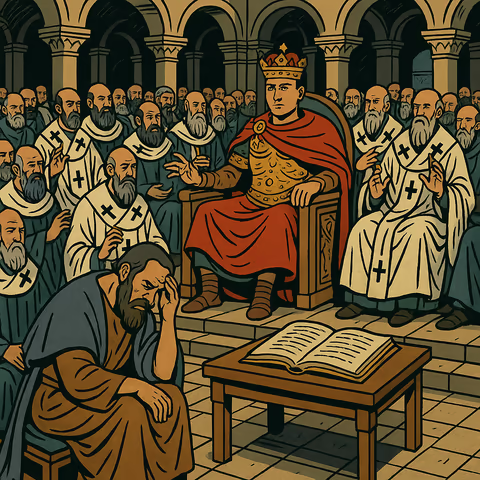 Timeline of Bible Canon Formation
Timeline of Bible Canon Formation Timeline of Bible Translation
Timeline of Bible Translation Timeline of Church Schisms, Gnostics, and Sects
Timeline of Church Schisms, Gnostics, and Sects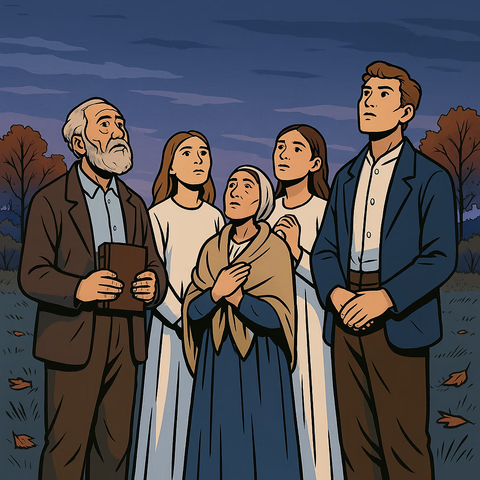 Timeline of Failed Apocalyptic Predictions
Timeline of Failed Apocalyptic Predictions
Also see our Articles index and our About section.